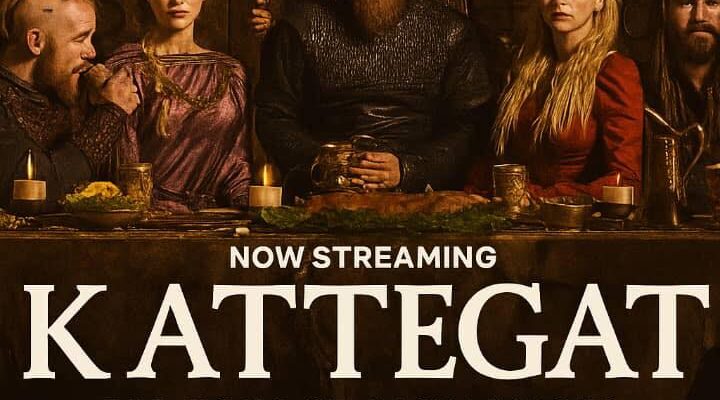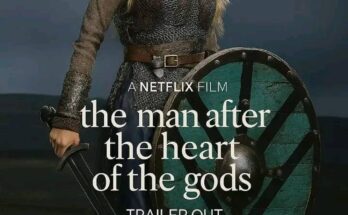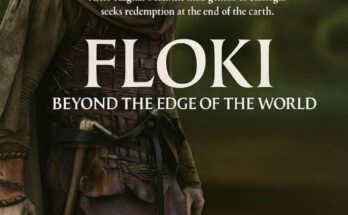Kattegat, New Netflix Film: The Legacy of the Ragnarssons Endures in a Grand Viking Epic
Netflix has once again turned its attention to the world of Vikings, legends, and the timeless clash of ambition and destiny with its latest film, Kattegat. Positioned as both a continuation of a mythos and a standalone saga of its own, the movie delves into the enduring legacy of the Ragnarssons, the sons of Ragnar Lothbrok, whose stories have captivated audiences for years. With sweeping cinematography, raw battles, and deeply personal drama, Kattegat presents itself not merely as another retelling of Norse lore but as a living, breathing epic that bridges generations of warriors and kings. The very mention of Kattegat brings an immediate association with one of the most iconic settings in Viking history—a place of power, trade, and blood-soaked politics. Netflix’s choice to anchor its film in this legendary stronghold signals its intention to pay homage to the past while offering a fresh vision for new audiences. The Ragnarssons’ name carries weight; it is steeped in both fear and respect, built on the deeds of men who challenged kings, defied empires, and carved their path through both history and myth. The film captures the duality of their existence—heroes to some, marauders to others—while asking whether the weight of such a legacy is a blessing or a curse.
At its core, Kattegat is not just a spectacle of clashing swords and roaring longships, though it delivers those in abundance. It is a meditation on legacy, exploring how the actions of fathers echo through their sons and how history is shaped not only by great deeds but also by the way those deeds are remembered. The Ragnarssons—Bjorn Ironside, Ivar the Boneless, Hvitserk, Ubbe, and Sigurd Snake-in-the-Eye—each carried Ragnar’s vision in their own way, sometimes in unity, often in conflict. Netflix’s new saga revisits their stories not as isolated events but as threads woven together into the greater fabric of Viking destiny. What makes the film compelling is its refusal to simplify these figures into mere warriors or kings; instead, it highlights their contradictions. Bjorn’s strength is set against his yearning for peace and stability, while Ivar’s ruthless brilliance is haunted by vulnerability and the constant reminder of his physical frailty. Hvitserk’s wandering soul, torn between loyalty and self-discovery, contrasts with Ubbe’s search for new horizons and new lands. Sigurd, often overshadowed, is given room to emerge as more than a footnote, his presence a reminder that even the lesser-known carry pieces of the Ragnar legacy.
The direction of the film is ambitious, capturing both the grand scale of Viking warfare and the intimacy of personal struggle. Battle scenes are mounted with relentless energy, the clash of axes and shields choreographed to reflect both the chaos and the strange artistry of war. Yet in quieter moments, the weight of legacy becomes palpable. Scenes of sons wrestling with their father’s shadow feel just as powerful as armies colliding on the battlefield. The cinematography lingers on landscapes that feel alive with history—mist rolling across fjords, waves battering the prows of ships, firelight illuminating faces marked with scars of both combat and memory. Every shot seems designed to remind viewers that these are not just characters in a story, but part of an enduring myth that stretches beyond the screen.
One of the film’s strengths lies in its treatment of Kattegat itself, not just as a backdrop but as a character in its own right. It is the heart of the saga, a place where alliances are forged and betrayed, where the ambitions of men and women rise and fall, and where the Ragnarssons’ name continues to resonate long after Ragnar himself has passed. Netflix’s production design ensures that Kattegat feels both familiar and reimagined, steeped in authenticity while elevated with cinematic grandeur. It embodies the paradox of Viking life: a place of community and belonging, yet one forever balanced on the knife’s edge of violence and ambition.
Beyond its narrative, Kattegat is also a cultural meditation, arriving at a time when audiences are eager for stories that blend historical grit with timeless themes of power, loyalty, and destiny. The film does not shy away from the brutality of the Viking world, but it also acknowledges the humanity within it—the bonds of family, the ache of loss, the drive to carve out meaning in an unforgiving world. This is not simply about glorifying conquest; it is about asking what remains when the battles are over and whether legacy is built on blood alone. The Ragnarssons become a lens through which the film explores universal questions: what do we owe to the past, and how do we honor it without being consumed by it?
Performances carry much of the film’s weight, with actors embodying both the fierceness and the fragility of these legendary figures. The casting ensures that each Ragnarsson is distinct, not only in their physical presence but in their inner struggles. Bjorn is rendered with gravitas befitting a leader torn between worlds, while Ivar’s portrayal balances menace with a strange, magnetic charm that makes his cruelty compelling to watch. The emotional resonance comes not from speeches or proclamations, but from moments of silence, of longing, of rage barely contained. Netflix ensures that Kattegat feels like more than entertainment—it feels like an inheritance, a story handed down and reshaped for a modern audience that still finds meaning in ancient struggles.
What sets Kattegat apart from other Viking stories is its willingness to embrace ambiguity. Heroes are not spotless, villains are not without reason, and history is not a straight line but a cycle of rise and fall. The Ragnarssons are remembered as both conquerors and destroyers, symbols of strength and of the chaos strength can unleash. By embracing these contradictions, the film avoids falling into cliché and instead resonates with the complexity of real human lives magnified by myth. In this way, the film honors both the historical sagas and the modern appetite for stories that challenge rather than comfort.
As the credits roll, the impression left by Kattegat is one of both awe and contemplation. It is a Viking saga in the truest sense, but also a meditation on the legacies we inherit and the ones we leave behind. The Ragnarssons’ story is not finished, for as long as their name is spoken, they live on—not just in history books or ancient songs, but in the imaginations of those who still wonder what it means to wield power, to seek glory, and to carry the weight of a father’s dream. Netflix’s epic achieves something rare: it feels like both a continuation and a rebirth, ensuring that the saga of Kattegat and the legacy of Ragnar’s sons will echo for years to come.



